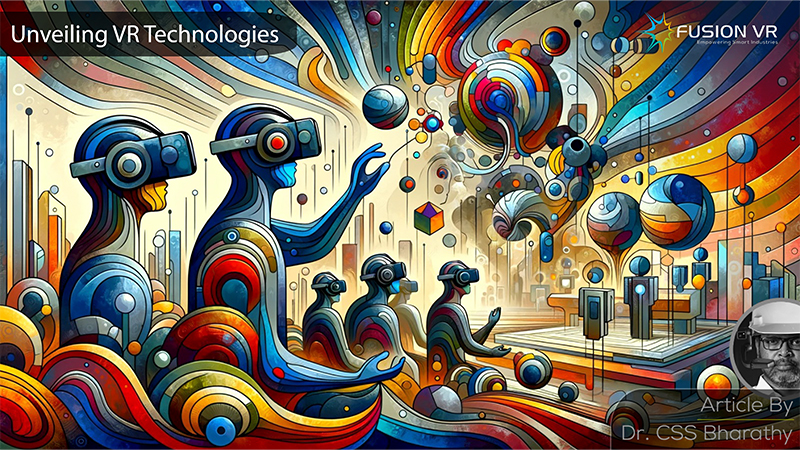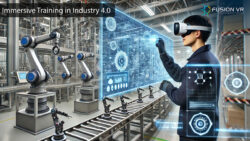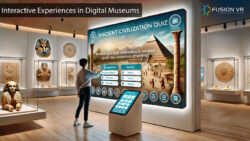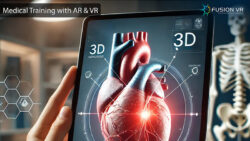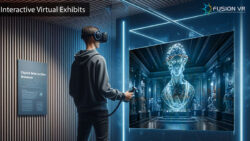Virtual reality (VR) is the buzzword in tech circles these days. These technologies are revolutionary and have made remarkable advancements in recent years. They provide the most amazing immersive experiences for various use cases across various industries and sectors of the economy. In 2024 we can see how these technologies are evolving, powered by innovations in hardware, software, and content creation. The future of virtual reality is indeed exciting and I wish you to accompany me as we explore the latest virtual reality technologies in 2024.
The first and the most exciting has been in the area of VR hardware. Yes, you guessed it right, we are going to talk about Advanced VR Headsets. The significant improvements in VR headsets result in higher resolutions, improved levels of comfort, lower weight, and most importantly a wider field of view. These improvements have helped leading manufacturers win over more converts to experiencing and using virtual reality. The market leaders in VR headsets such as Oculus, HTC, Sony etc have released product upgrades and newer models that have significantly enhanced the user VR experience. The latest Oculus headset offers a 140-degree field of view along with a 4K display that gives users a fantastic immersive and highly realistic experience. The advances in design approaches will continue to churn more futuristic headsets, so watch out!
Eye tracking technology is a really cool one that enables the VR application to render high-resolution graphics at the places where the headset user is looking. This helps to avoid higher-resolution imagery in the peripheral areas where they are not actually looking. This is called foveated rendering which is actually with the performance optimization of the headset and helps to reduce the computational load which results in improving the overall virtual reality experience. This sophisticated-sounding term is actually mimicking how the human eye processes visual information. The key takeaway here is the confluence of our understanding of how the human eye perceives, the functioning of our brain and how technology is being constantly developed to provide a more realistic virtual reality experience.
The metaverse is revolutionizing the way we view cyberspace over the last three decades. The interfaces have evolved from simple text and imagery to videos, interactive content etc. With advances in computing and communication technologies, we are able to obtain immersive experiences using virtual reality technology and are really poised to traverse the virtual and real worlds around us. This requires us to use virtual reality devices which do cause issues to all users. One of these is the perceived strain on the eyes. This issue is being addressed with varifocal displays which help to adjust the focus of the user’s vision in accordance with where they are looking. This allows a smoother transition as the virtual reality environment is perceived through the lens of the VR headset allowing for a more natural immersive experience. This technology is continually being refined and will help users engage for longer periods of time in a VR environment that could be for gaming or other activities separately or in the metaverse.
Haptic feedback technology helps to enhance realistic visual interactions by simulating textures, vibrations etc. This has been integrated into VR controllers thereby enabling users with a highly immersive virtual reality experience. This technology has made VR controllers more responsive, precise and accurate thereby making users completely at home, unmindful of their separation from their real physical environment and a total immersion in a virtual world.
Another technology that is bound to become increasingly popular is wireless virtual reality solutions. This advancement provides virtual reality users greater freedom of movement thereby eliminating the constraints of a tethered controller. It is also safer from cables dangling and getting in your way by introducing trip hazards. This technology has come to fruition because of the stunning advancements in WiFi 6E and 5G technologies that have ushered in high speed and low latency connectivity without any tethering to the PC and the freedom to experience anywhere a high-quality VR experience. This will enable us to take the magic of virtual reality to the remote corners of the world and bring about significant changes in societies and their economies.
Not many of you may have heard of Mixed Reality Integration, but here I am to share a few things about it. This technology combines virtual and augmented reality elements and has enabled their integration into VR systems this year. This has enabled users to interact with the smart integration of the real and virtual worlds delivering a highly enhanced and immersive experience. This has exciting applications in the world of skill development, gaming, education and corporate training. As more organizations have begun embracing the advantages of VR training, they could become one of the earliest adopters of this integration.
Artificial intelligence has been making waves since 2023 and it’s making a huge influence in all areas of human life. AI-powered interactions have also begun their integration into virtual reality technologies to enhance user experience and interactions. AI collects data on user behavior and biometrics to better understand user preferences and develops algorithms to make the content and experiences more relevant and meaningful. This is driving a huge shift in how we design virtual reality applications and solutions that deliver maximum customer value and satisfaction.
Real-time 3D Rendering has developed significantly in the virtual reality industry. It is helping to develop more realistic, more interactive and more immersive VR experiences. Developers are creating highly impressive, detailed and stunning virtual reality experiences using highly advanced rendering techniques such as ray tracing, advanced shading etc.
Virtual reality has made a significant impact in many industries and sectors. The education and training sectors will continue to be the largest beneficiaries of virtual reality technologies. The advancements captured above will be driving greater adoption of virtual reality applications. More effective use cases are identified and solutions implemented not just in India, but globally as well. Virtual reality education has enabled students to experience and learn concepts and skills that have previously been expensive or inaccessible. Virtual reality has also enabled more effectiveness at developing competencies that are industry-relevant and has aided students in secondary and tertiary institutions to be job-ready.
These advances in technology will also be seen in the use of virtual reality in the healthcare and life sciences sectors. Highly enhanced virtual reality solutions are increasingly deployed to develop the skills and knowledge needed by doctors, nurses and other healthcare professionals. We are aware of the use of virtual reality to develop visualizations of the human anatomy, helping students to see how the various organs and systems of the bodywork without needing to imagine based on drawings and textual information. Virtual reality solutions are helping doctors, surgeons and other clinical staff to simulate and plan complex, high risk surgeries that are helpful in delivering positive patient outcomes in the operating rooms.
Fusion VR has been a pioneer virtual reality company in India and a leader in the development and implementation of virtual reality solutions for a broad spectrum of manufacturing industries, institutions, museums, government and NGOs. Our experience as a virtual reality company in the last two decades has provided us with the knowledge and expertise to view new technological developments and understand the trends that would eventually be created. We also extend our services to leading organizations to identify and exploit the advantages provided by virtual reality solutions that deliver competitive advantages, increased customer value and improved returns on investment.

